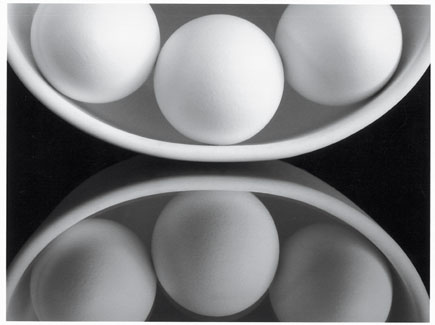Reflective Images
When you view a smooth, shiny surface from the proper angle--such as glass, metal or water--you'll see a reflected image. These reflections provide you with a great opportunity to add interest to a photo by showing two different aspects of the environment at the same time. Since the reflected portion of the image is almost always distorted, it often lends a surreal quality to a photograph.
 |
|
|
When composing an image using reflections, it's often a good idea to show both the reflection and the actual subject being reflected. If you're shooting reflections of pine trees in a lake, for example, you may want to include a small portion of the surrounding trees and shoreline.
 |
|
|
Water is undoubtedly one of the most popular reflective sources for photography. On a calm day, a large body of water can resemble a huge mirror, reflecting perfect images of clouds, foliage, and mountains. Sometimes the reflected image is very true-to-life, and you can use a picture like this to fool the eye. Try shooting rock formations reflected in a lake, and turn the photo upside-down to create a unique image.
When working with less-still bodies of water, you can capture fragmented reflections, which can result in impressionistic images. Ripples and waves can change a realistic reflection into an abstract array of colors. Smaller puddles or ponds also offer possibilities for interesting photography.
 |
|
|
And speaking of artistic images, you can create your own reflective surfaces to achieve interesting, abstract effects. There's no need to limit yourself to photographing reflections that you happen to stumble upon. Just use a shiny surface that you can move (or move around it) relative to the positions of the camera and subject. You can shoot great reflected images in metal, mirrors or even soap bubbles. Just ensure that the reflection is interesting and recognizable. If you're photographing someone wearing a pair of sunglasses, for example, make sure that the reflected subject is distinct and eye-catching.














































